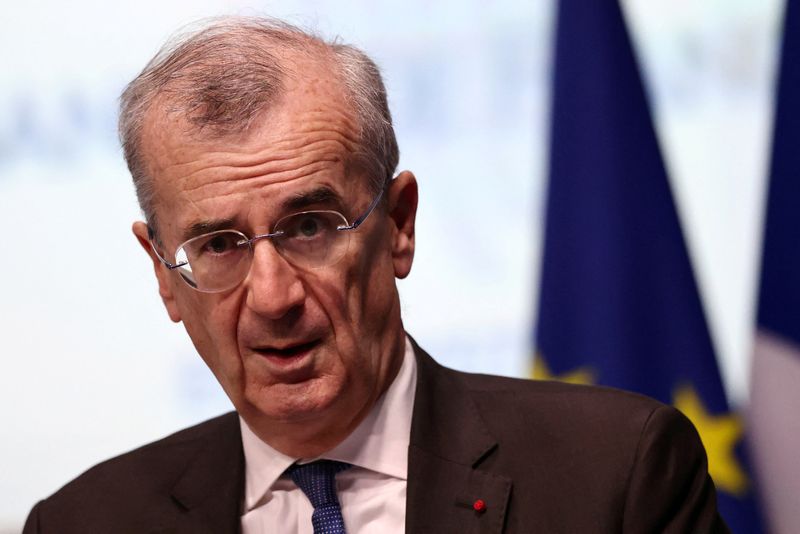New ECB tool must backstop commitment to euro – Villeroy
2022.06.21 04:26

FILE PHOTO: Bank of France Governor Francois Villeroy de Galhau delivers a speech during the annual meeting of Small and Medium-sized Enterprises leaders at the Bank of France in Paris, France, October 22, 2021. REUTERS/Sarah Meyssonnier/File Photo
PARIS (Reuters) – The European Central Bank’s planned instrument against financial fragmentation between euro countries must allow it to back up its commitment to defending the euro, ECB policymaker Francois Villeroy de Galhau said on Monday.
At an emergency meeting last week, the ECB asked staff to speed up the design of an “anti-fragmentation” tool after a sharp widening in spreads between southern European bond yields versus safe-haven German debt.
Speaking to Italian newspaper Corriere della Sera, Villeroy said the meeting was the best proof that there are no limits on the ECB’s commitment to ensuring stable prices and protecting the euro.
“This should be a backstop instrument. It should be available as much as necessary, so as to make our no-limits commitment to protect the euro very clear,” Villeroy said.
“The more credible such instrument, the less it may have to be used in practice. This is how a backstop works,” he added.
Villeroy, who is also governor of the French central bank, said a tool specifically devised to combat fragmentation was necessary to ensure the orderly transmission of monetary policy across the euro zone’s member countries.
So far ECB President Christine Lagarde has been vague about how the instrument would be used and when it would be ready as well as what conditions could potentially be imposed on countries benefiting from bond purchases under the programme.
Villeroy said that while the programme would have rules the ECB would also have the freedom to exercise its judgement and that market interventions should be sterilised, meaning that they would be done in ways that do not affect its monetary policy stance.
He added that bonds purchased would not necessarily need to be held until maturity but rather until after market tensions subside.
“In other words, we could be more agile in buying but also in selling after some time,” Villeroy said.








